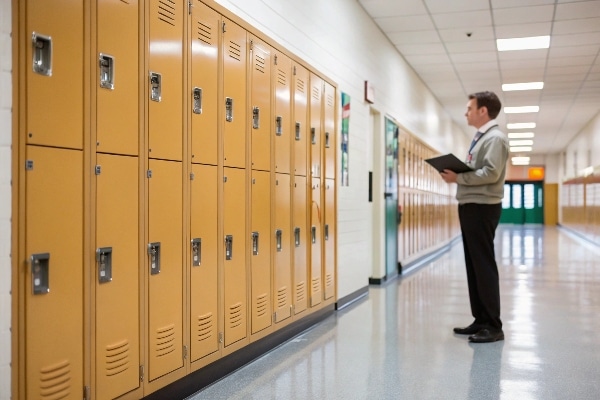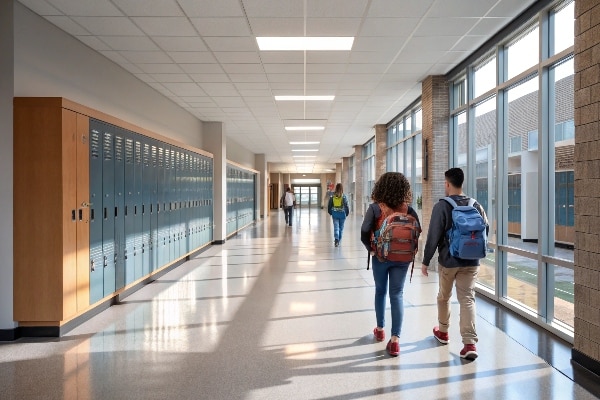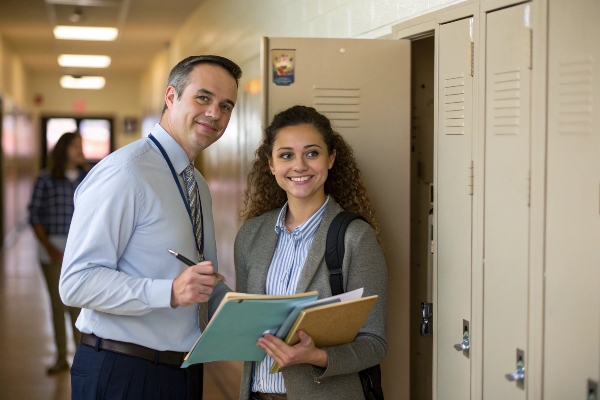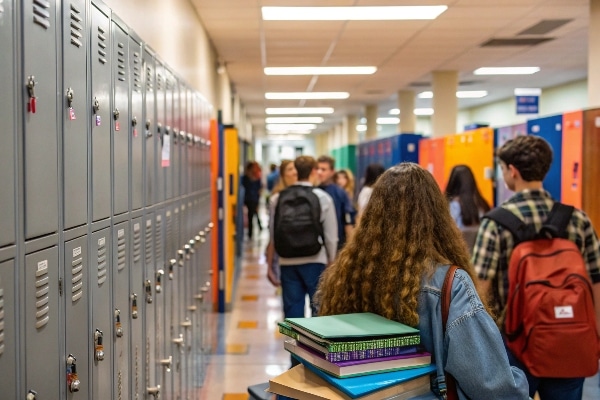
It can be surprising and concerning to learn that a teacher has restricted your child from locking their locker. However, this decision often stems from school policies or specific concerns about safety, accessibility, or behavior.
Teachers may not allow students to lock their lockers if the school has policies restricting locks, concerns about prohibited items, or the need for easier access during inspections or emergencies.
Understanding the reasons behind such rules can help parents address the issue and work with the school to resolve any concerns.
Why Do Schools Not Allow Lockers?

While lockers are a common feature in many schools, some institutions choose to limit their use or impose restrictions on locking them. This decision is typically based on logistical, security, or behavioral concerns.
Schools may avoid or restrict lockers to reduce hallway congestion, prevent misuse for hiding contraband, or simplify security measures during inspections.
Common Reasons for Restricting Lockers:
-
Hallway Congestion:
Lockers can create bottlenecks in hallways during busy periods, making it difficult for students to move between classes efficiently. -
Misuse of Lockers:
Schools may restrict locker use if students are found storing prohibited items, such as weapons, drugs, or stolen property. -
Security Concerns:
Unlocked or poorly maintained lockers can become easy targets for theft or vandalism, leading schools to discourage their use. -
Administrative Control:
Without lockers, administrators and teachers can more easily manage student belongings, particularly during emergencies or security incidents.
While lockers are a helpful tool for organization, schools must balance their benefits with the potential challenges they present.
Can Teachers Open Your Locker?

A student’s locker may feel like personal space, but it is technically school property, which means teachers and administrators can access it under certain circumstances.
Yes, teachers or administrators can open a student’s locker if there is reasonable suspicion of rule violations or safety concerns. Schools retain the right to inspect lockers as part of maintaining a safe environment.
Why Teachers Can Open Lockers:
-
School Property:
Lockers are provided by the school and remain school property, meaning staff have the authority to access them. -
Reasonable Suspicion:
If there is evidence or suspicion that a locker contains prohibited items, teachers may inspect it to ensure safety and compliance with school policies. -
Routine Inspections:
Some schools conduct periodic locker checks to maintain cleanliness and prevent misuse. These are typically announced in advance. -
Emergency Situations:
In cases of emergencies, such as threats or missing students, teachers may need immediate access to lockers without prior notice.
Students should be aware that while lockers are assigned for personal use, they are not completely private spaces.
Are School Lockers Good or Bad?

Lockers are a staple in many schools, but their usefulness and drawbacks are often debated. While they help students stay organized, they can also lead to logistical or behavioral challenges.
School lockers are both good and bad, depending on how they are used. They promote organization and reduce physical strain but can also cause congestion or be misused for hiding prohibited items.
Advantages of Lockers:
-
Organization:
Lockers provide students with a space to store books, supplies, and personal items, reducing the need to carry everything throughout the day. -
Reduced Physical Strain:
By storing heavy textbooks in lockers, students can avoid carrying them around, which helps prevent back and shoulder strain. -
Personal Responsibility:
Managing a locker teaches students to take care of their belongings and stay organized.
Disadvantages of Lockers:
-
Misuse:
Lockers can be used to hide contraband, stolen items, or even food that spoils and attracts pests. -
Hallway Congestion:
During busy periods, lockers can create traffic jams in hallways, making it harder for students to get to class on time. -
Security Concerns:
Lockers that are not properly secured may be targeted for theft or vandalism.
Schools that choose to provide lockers must weigh these advantages and disadvantages carefully, implementing clear policies to maximize their benefits while minimizing risks.
Conclusion
If your child’s teacher has restricted their ability to lock their locker, it’s often due to safety concerns, school policies, or behavioral issues. While lockers are beneficial for organization and security, their use must align with the school’s broader goals of safety and efficiency. Parents can work with teachers and administrators to address any concerns, ensuring that lockers remain a helpful tool rather than a source of complications.
v

